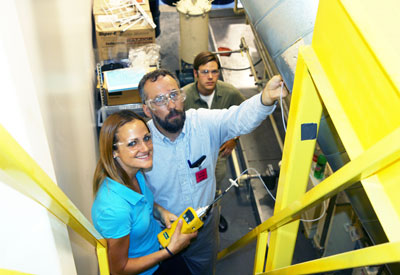
Site visits allow MnTAP staff members to gain a better understanding of your facility’s processes in order to identify strategies for improving efficiency and reducing waste and energy.
A MnTAP staff member can visit your facility to gain a better understanding of your processes and to identify opportunities for improving efficiency and reducing waste.
MnTAP staff members can address the following waste and energy reduction opportunities in your facility:
- Water use & wastewater
- Solid & hazardous waste
- Air emissions
- Packaging
- Raw material use
What to Expect
Prior to the visit, we may contact you for information regarding energy or material use; this will help us customize our recommendations and provide you with more realistic cost savings estimates. A MnTAP scientist or engineer will walk through your facility with you to identify processes, procedures, or products that are generating waste, are toxic to the environment, hazardous, or might be using resources inefficiently.
A follow-up site visit letter will present recommendations for improving efficiency and reducing waste in your facility. From time to time, a The MnTAP staff member will call then periodically follow up with you to find out if any recommendations have been implemented or if you need additional assistance.
Confidentiality
MnTAP fully respects a company’s need to protect its sensitive, proprietary, or confidential information and works under a confidentiality policy. View our Confidentiality Statement
Company Benefits
- Discover waste reduction and energy efficiency opportunities specific for your operations
- Reduce your facility’s environmental impact and improve public health
- Save money
- Gain access to further assistance through MnTAP intern projects, grant and loan opportunities, and MnTAP-facilitated internal teams.
Example: Properly Identifying Waste Streams Saves Money
An extended care facility in northern Minnesota sought assistance from MnTAP when it began seeing a rise in infectious waste disposal charges. During a visit, MnTAP found that the facility was mistakenly sending non-hazardous items through the infectious waste stream, which carries higher disposal charges. Facility staff were retrained on what constitutes infectious waste, leading to a reduction in the volume of infectious waste as well as a realignment of their waste hauling contract to adjust for the change. The changes resulted in 1,500 lbs diverted from the infectious waste stream and $4,300 in savings.